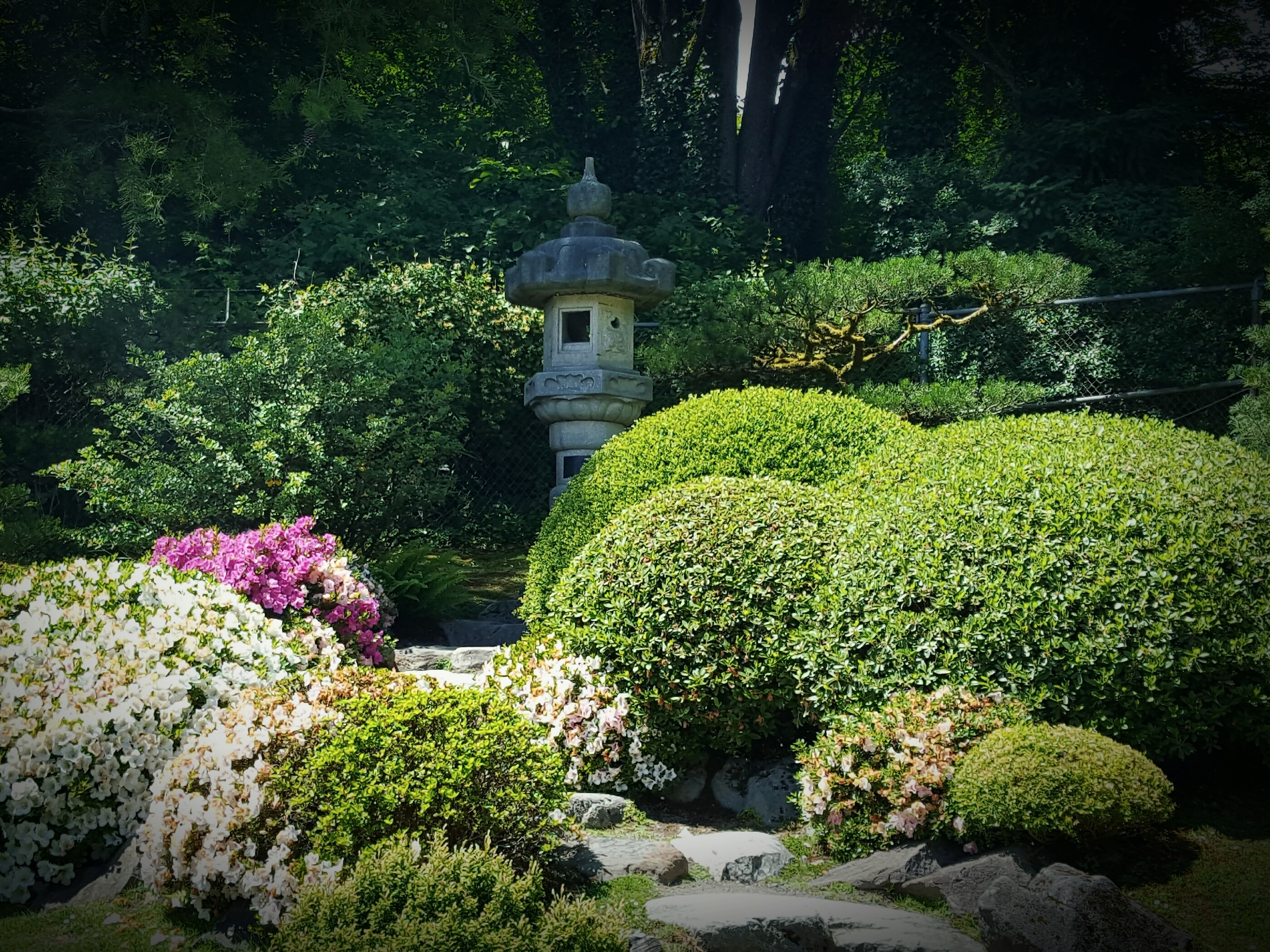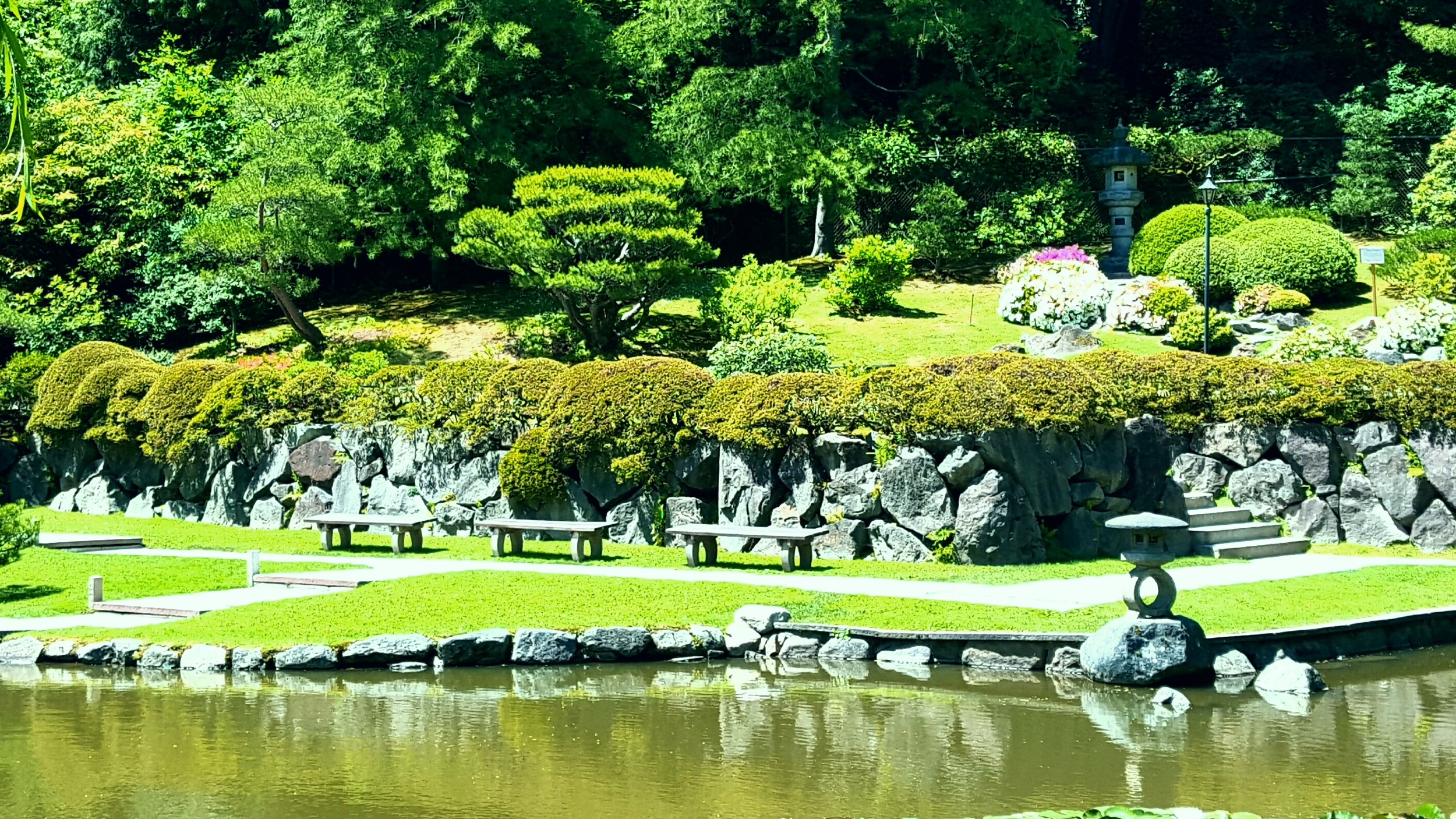Karikomi, the Art of Shearing Back
Senior Gardener Pete Putnicki revives the popular "Gardener's Corner". This month, he teaches us about karikomi, the technique of shrub shaping that is a distinctive element of Japanese gardens.
Massed mounds of clipped evergreen shrubs are a signature look of Japanese gardens. Evocative of rolling hills, mossy boulders or distant forest canopies, these elements add depth, structure and a sense of fullness to the Garden.
The term karikomi can be translated as “sheared back”, and refers to the technique of regularly clipping evergreen shrubs into these forms, okarikomi refers to massed plantings of sheared shrubs. The term dates back to the mid-16th century, but the style and aesthetic is, undoubtedly, much older. Examples of karikomi can be found in many of Japans most respected and beloved gardens.
Karikomi should always be viewed and maintained with respect to the relationship of the pieces in the garden. Scale of individual pieces as well as the composition as a whole is of utmost importance. Individual tastes vary. Some gardens feature informal organic shapes, with variations in height and width, while other gardens feature very structured, uniformly shaped material.
I tend to favor a fairly formal shape, a hemisphere. It is important to maintain a look of weight, fullness and stability to these plants. The hemisphere, with the natural proportions of two times as wide as tall, has a feeling of stability and fullness, a connectedness to the ground. In nature, the soft roundness of a hemisphere is evident in mature broadleaf trees at a distance, it is this stylization of nature that we are aiming to recreate in the Garden. Looking at the azaleas on the north wall from the south end of the pond, particularly on a misty morning, it is easy to appreciate the illusion of a row of distant trees receding into the extent of vision.
The practical maintenance of karikomi involves the regular shearing of new foliage timed appropriately for proper plant regrowth, as well as regular thinning and pruning to maintain proper branch structure. It is also important to use the proper plant material.
Shearing typically occurs in early summer or late spring after blossoms have faded. This timing allows for development of flower buds for next season as well as avoiding the rapid regrowth that would occur if trimming was done earlier in the season. Subsequent light trimming later in the year maintains shape. Holding the shears steady with the left hand and using the right hand to provide the clipping action keeps the profile even, working around the plant. As the technique is practiced and mastered, the smooth, even curves emerge as a result of the proper technique.
When thinning and shaping, we are always conscious of ideal interior branch structure. Ideal branch structure inside the plant is well spaced, tapering branches radiating out from the center. The lowest branches should be the longest, with each branch above being shorter and shorter until the top, where fine branches spread into the crown. Vertical branches should be removed, and the outer shell of fine twigs and foliage should be lightened and thinned to allow new growth to emerge.
Karikomi on the azaleas atop the rock wall creates the the illusion of a row of distant trees receding into the extent of vision.
It is also often required to renovate or re-shape pieces to repair or improve their overall quality. Plants can be clipped hard, below the foliage, and then thinned to remove thick, woody branches; or can be cut back hard to a bare framework. This is necessary if the interior structure is very poor or if the plant needs major reduction of size or reshaping.
Appropriate material for karikomi must be fine foliaged, evergreen and capable of regenerating new growth on brown wood (below active leaf tissue). Traditionally, Japanese gardens use small leaved evergreen azaleas (Rhododendron obtusum or Rhododendron indicum and their various hybrids) for karikomi. Other species, such as dwarf Japanese Holly (ilex crenata), boxwoods (buxus sp.) are also used, as they have the necessary characteristics. In our garden, we also use the only conifer appropriate for this application, yew (taxus sp.). While the flower display in the spring can be breathtaking, the tradition of Japanese Gardens emphasizes form over florescence. The bright display that is so appealing to many visitors is understood to be temporary, but the form and foliage is a year-round feature that must be maintained.
While karikomi is, by definition, sheared, the shapes and forms of these plants are applicable in many other areas of the garden. We will often carefully prune and shape other plants in the garden to echo and reflect these dense, smooth shapes in more open, naturalistic forms. In the formal areas in the northern part of the Garden, the smooth clipped texture is desirable. But soft, rounded mounds of foliage are evident in many of our more natural inspired areas as well, and can help to reinforce the illusion of depth and distance. As distance grows, detail fades and the mind’s eye tends to seeks to recognize and correlate what is near with what is far. When visiting the Garden, look for these shapes and forms.
Our goal in the Garden is to provide our visitors with a fulfilling and unique experience. Our goal with pruning serves this overall mission with intention, understanding and respect of the resources entrusted to us.
Peter Putnicki is the Senior Gardener at Seattle Japanese Garden. Peter gives special thanks Mark Bourne, a Japanese Garden historian and Ph.D. candidate at the University of Washington, for his contribution to this article.


